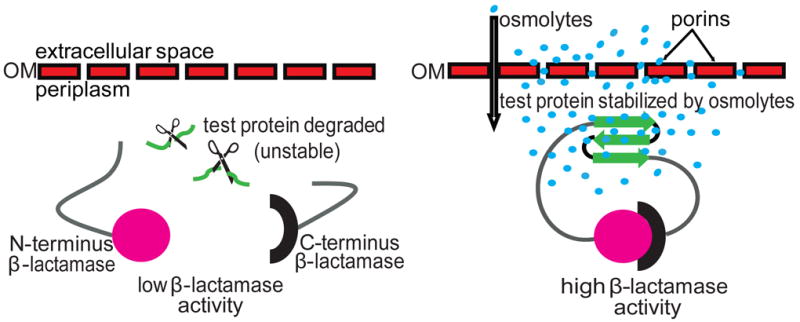Figure 1.

Schematic representation of a sandwich fusion system for assessing the influence of osmolytes on protein stability in vivo. An unstable test protein (green) is inserted into β-lactamase in the form of a sandwich fusion. (a) In the absence of osmolytes, the inserted protein is subject to degradation by periplasmic proteases, symbolized by scissors. This results in a separation of the two β-lactamase fragments and hence decreased β-lactamase activity. (b) Osmolytes (blue circles) diffuse into the periplasm through the holes generated in the outer membrane (OM) by endogenous porins. The presence of osmolytes favors a stable fold of the inserted protein. This allows an association of the N- (magenta circle) and C- (black semi-circle) fragments of β-lactamase, resulting in high enzymatic activity.
